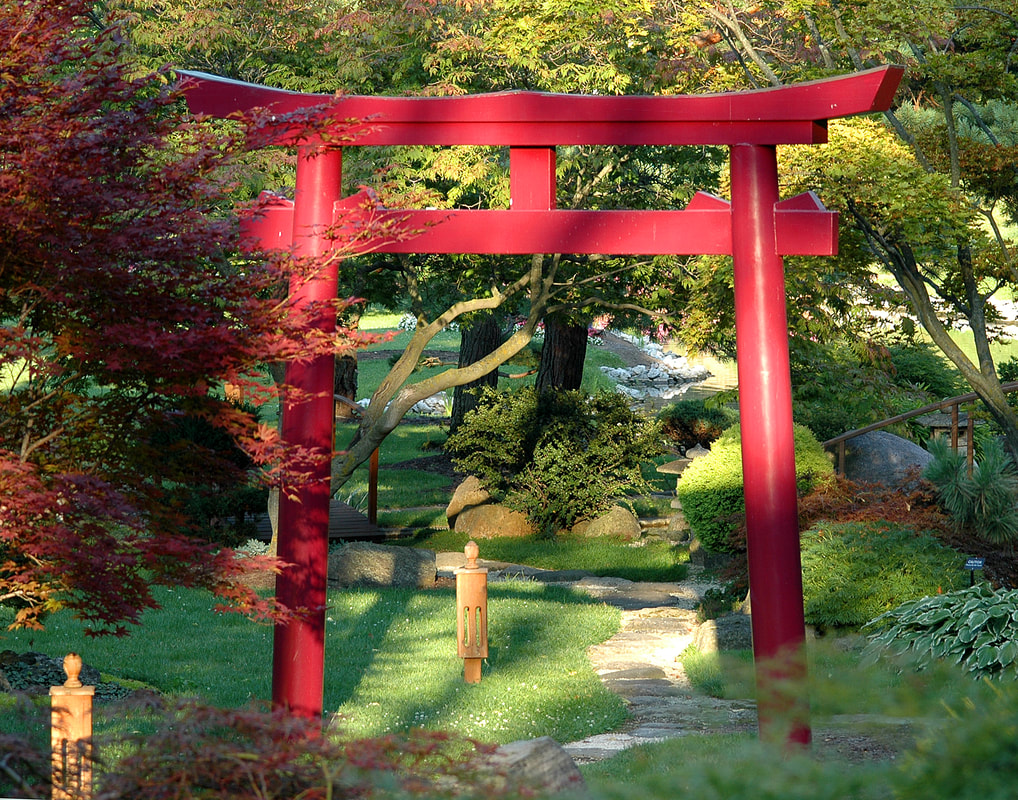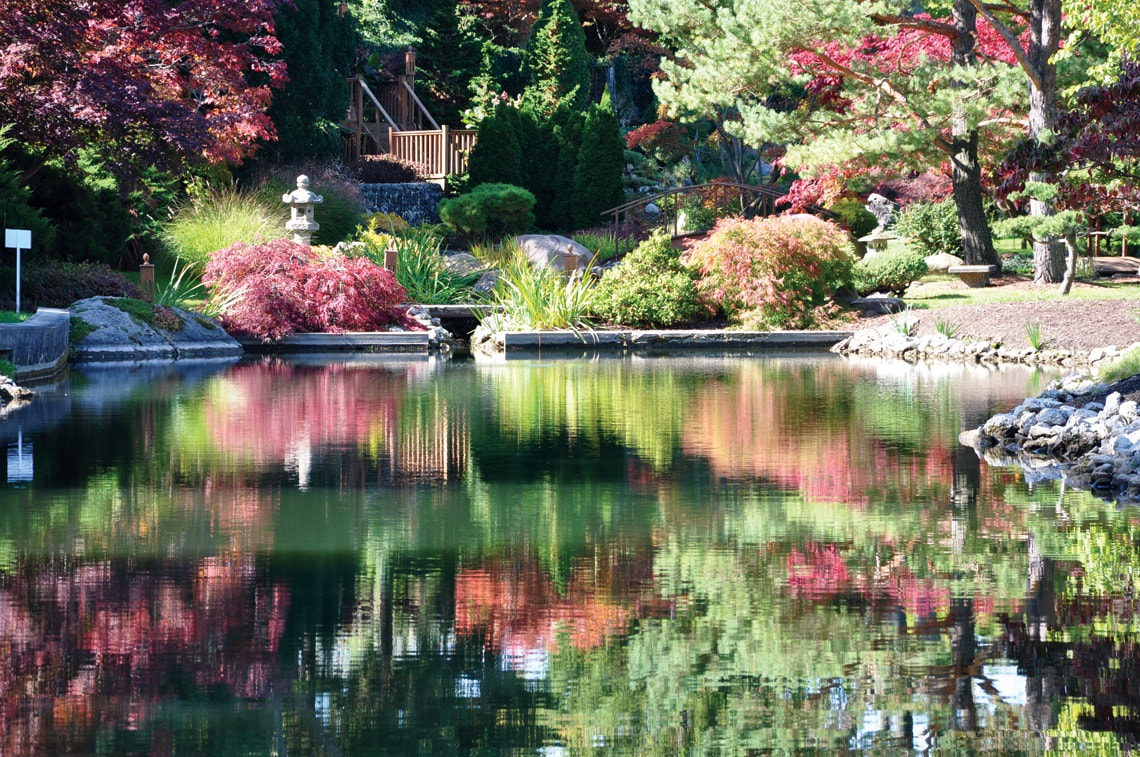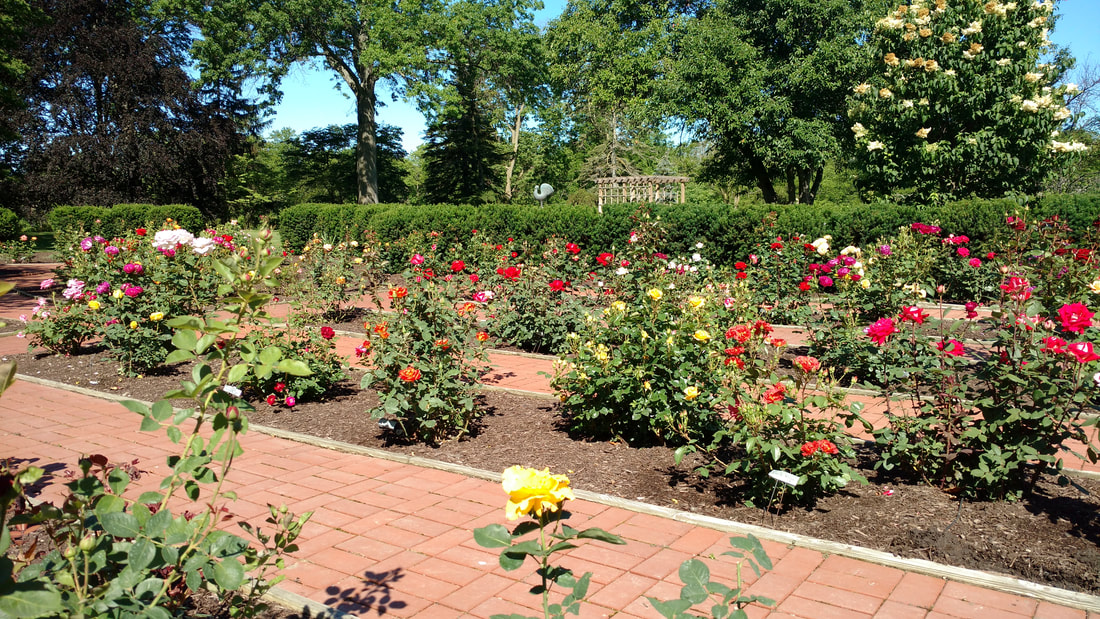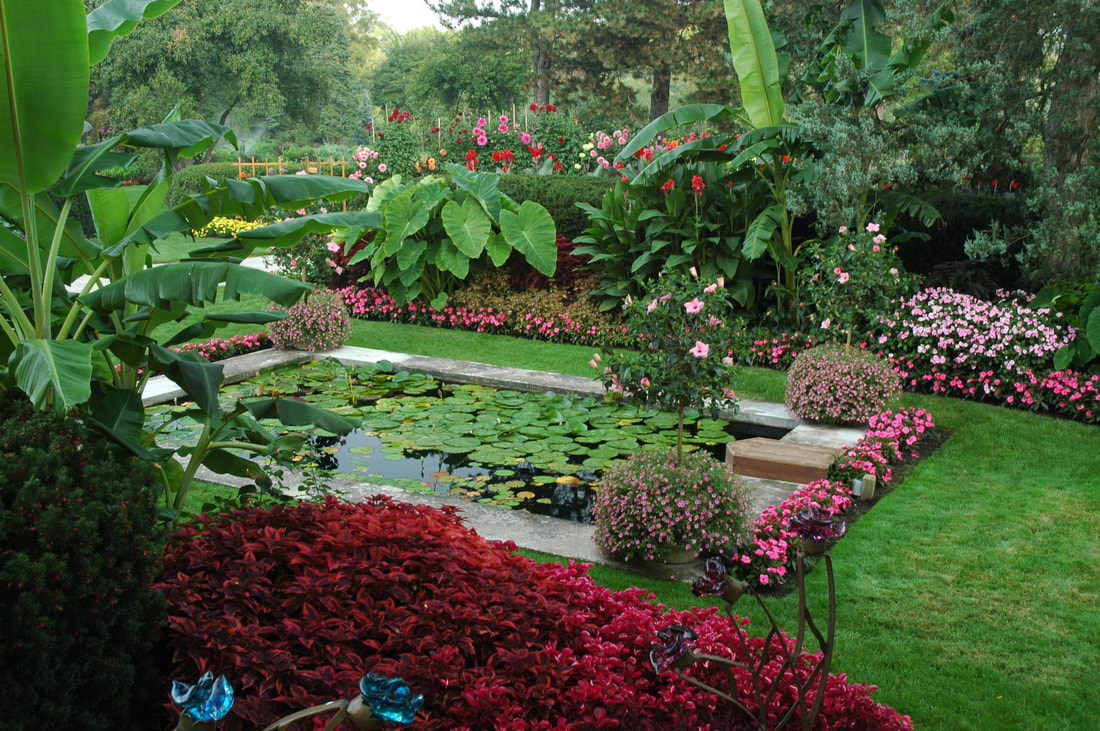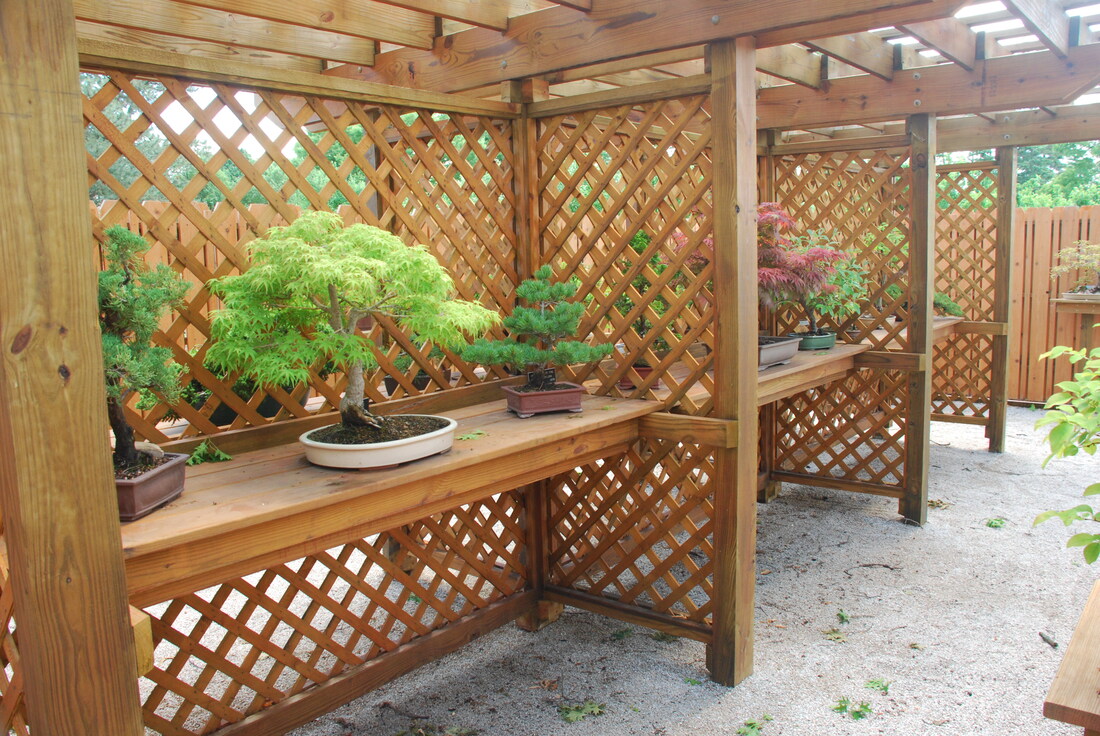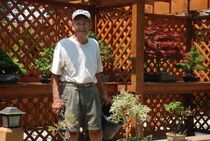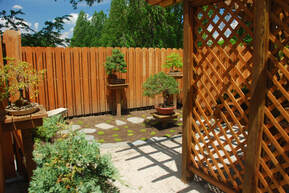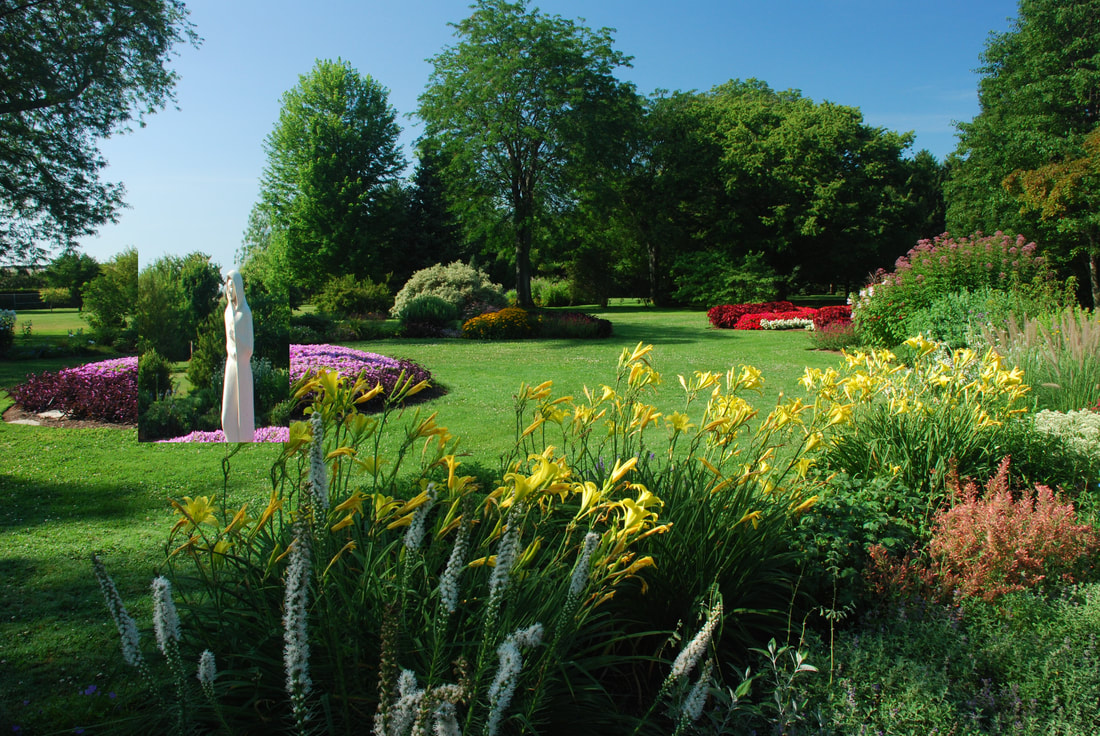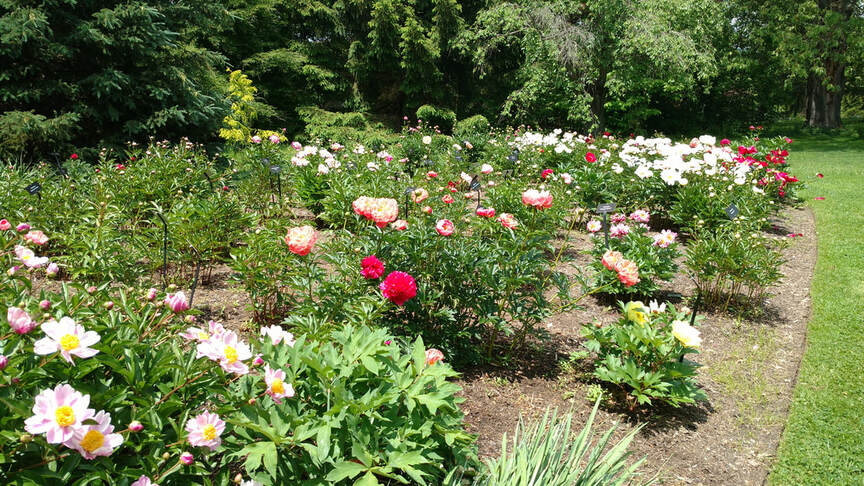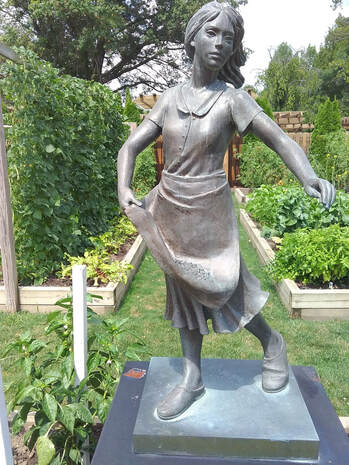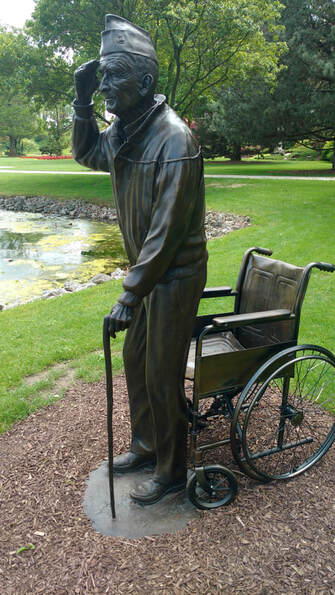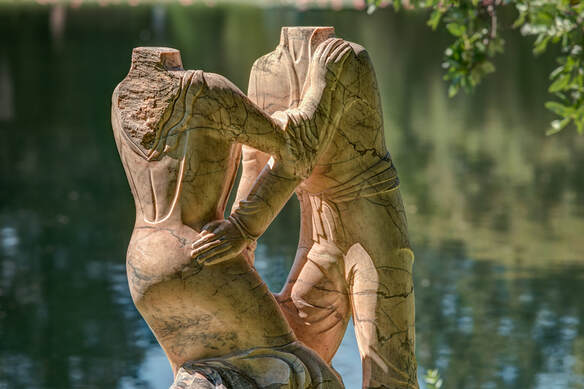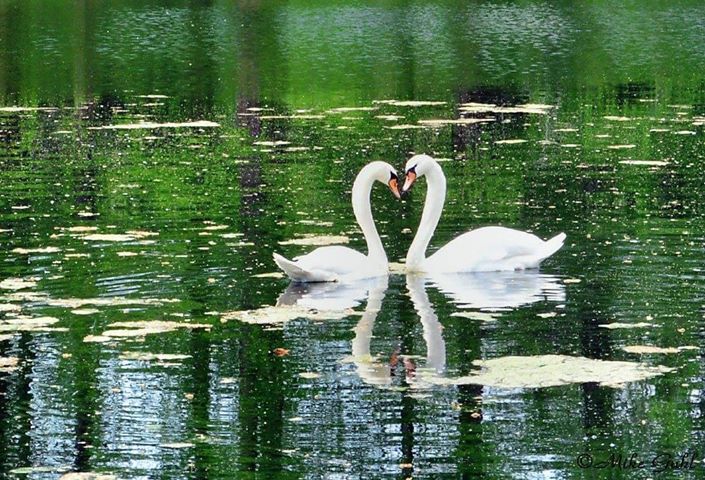In addition to many unusual and exotic species of trees and upwards of 10,000 annual plants and flowers, the Schedel Arboretum & Gardens maintains several themed garden displays where one will find unique presentations of plants and hardscapes designed to enhance the experience of appreciating nature. Some of those themed gardens were originally designed and built by the Schedel’s and based on their many experiences from all over the world. Other areas were designed and built after the foundation assumed operation of the gardens in 1989.
The Schedel’s began construction of the Japanese Garden in the late 1950’s. It includes many of the elements typically found in Japanese gardens but does not follow strict design principals for any given style or period — rather, it represents the Schedel’s interpretation of a Japnese garden which have existed since at least 720 A.D.. There is a 30′ foot waterfall, stream feature, bridges and a Torii gate. All are significant symbols in Asian culture. The Schedel’s aquired and brought several different pagodas and lanterns that are displayed here, including one large pagoda on the periphery where the Schedel’s ashes are interred in copper box at its base. Many varieties of Japanese maple trees and many unusual species of conifers adorn this area.
The SA&G Rose Garden is a very popular area for visitors. There are some 80 varieties of hybrid tea rose in the garden and many of those have been living here for decades. Roses in the garden are irrigated from underground to avoid the leaves becoming wet making the plants more susceptible to disease
The Tropical Garden, located next to the Trellis Gallery, was revamped and expanded in 2010 and but reduced in size as a cost measure beginning in 2015. There are several varieties of banana trees, and some 20 varieties of elephant ears, pineapple, several types of lemon, lime and pomegranate round out the display. Also included in the Tropical Garden is the reflecting pool which is home to several varieties of both tropical and hardy water lilies, gold fish, koi fish, frogs and turtles.
The Leo Pelka Bonsai Shelter, a world class bonsai collection. 95 individual specimens lay claim to be the largest in northern Ohio. The variety of tree species and many styling methods are endless. See a majestic Juniper cultivated in 1930 nurtured to maturity or the contrasting delicate symmetry of a miniature Dawn Redwood forest germinated from seeds exhibiting the spirit of the adjacent parent grove of full-size trees. View a healthy, vigorous, tropical Ficus bonsai captivating your eye through its sheer strength firmly anchored by large aerial roots.
The spacious Japanese - influenced pergola structure invites visitors to take a leisurely stroll through a peaceful environment working in perfect harmony to display the well-manicured bonsai specimens.
As you wander through its pathways while visiting this hidden gem "Best of Bonsai" and give the true living art a chance to tell their story. An art form that is not ever finished but alive never quite the same today as it was yesterday or tomorrow.
The spacious Japanese - influenced pergola structure invites visitors to take a leisurely stroll through a peaceful environment working in perfect harmony to display the well-manicured bonsai specimens.
As you wander through its pathways while visiting this hidden gem "Best of Bonsai" and give the true living art a chance to tell their story. An art form that is not ever finished but alive never quite the same today as it was yesterday or tomorrow.
The Perennial Garden is located adjacent to the Manor House and provides a beautiful display of color year around. Each spring, volunteers divide plants from this garden and they are displayed for sale near the vegetable garden.
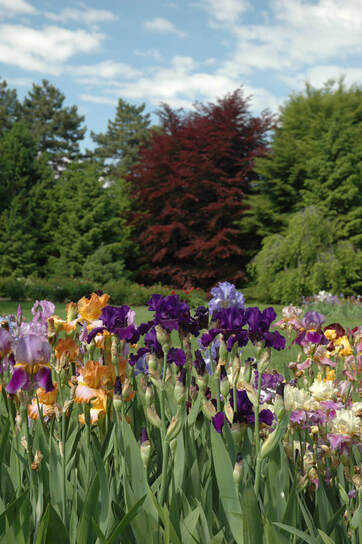
The Iris Garden located in the western portion of the upland garden area was replanted in the fall of 2012 with several new varieties of plants that should provide quite a show of color in mid- to late-April.
The Peony Garden is located adjacent to the Iris Garden and is home to more than 40 varieties of this early summer bloomer. The large colorful flowers will last from 1 to 6 weeks depending on the variety and conditions. There are a couple varieties growing here that were hybridized by Marie Schedel.
A special opportunity for learning about nature as an abundant source of food is on display annually in the Schedel Vegetable Garden. Board member, former director and now volunteer Dr. Reg Noble plants and cultivates the vegetable garden. Crops change from year to year but normally included tomatoes, cucumbers, carrots, spinach, cabbage, long bean, sweet peppers, potatoes, broccoli, brussel sprouts and much more. Vegetable harvested from the garden and given to volunteers and staff and are not normally available to visitors due to potential liability concerns.
Sculpture in the Gardens Sculpture was first introduced into the landscape at the Schedel Arboretum & Gardens in 2001 with an exhibit curated by the late Peggy Grant of Toledo, Ohio. After expanding its mission to include offering unique opportunities for the study and appreciation of art, the goal of the exhibit was to demonstrate the harmony that exists between nature and the arts. Now, some twenty years later, 25 large-scale sculptures adorn the grounds. Pieces in various mediums are on display including stone, bronze, marble, granite, steel and ceramics by regional, national and internationally renowned artists including Joseph Sheppard, Tuck Langland, Robert Garcia, Andy Sacksteder and Emanuel Enriquez
The McAlear Gallery, located in the Brown Welcome Center, was made possible through the generosity of benefactors Pat and Marilyn McAlear. The gallery features art exhibits each year showcasing the works of international, national and regional artists. With its soaring high ceilings, raised wood-panel architecture and museum lighting, the space is ideal for displaying various mediums of art. As a member of the Toledo Area Federation of Artists, Schedel Gardens continues to earnestly seek the work unique and respected artists to fulfill part of its mission of furthering the study and appreciation of the arts. Past exhibitors have included works from the country of India, Japanese calligraphy pieces produced by the masters, Walter Chapman, Barry Woods Johnston, Robert Mazur and Dennis Wojtkkiewicz.
April- May Exhibit will feature the Toledo Artists' Club.
April- May Exhibit will feature the Toledo Artists' Club.
Unique Features

